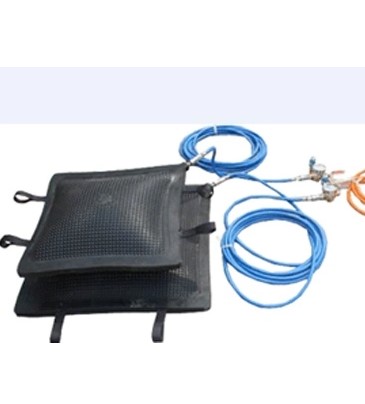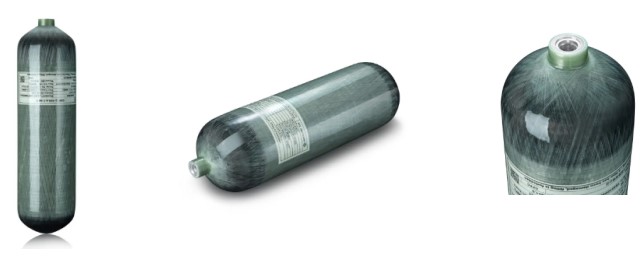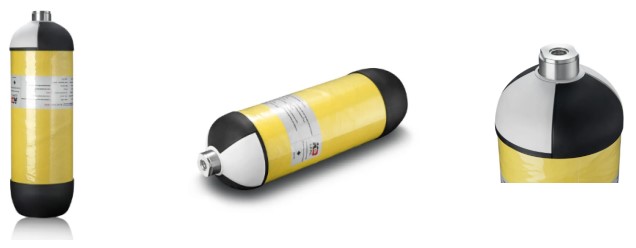In the world of rescue operations and heavy lifting, efficiency, speed, and safety are of paramount importance. Recent technological advancements have significantly enhanced the capabilities of lifting pads, particularly through the integration of carbon fiber cylinders, marking a leap forward in operational efficiency and safety. This article delves into the innovative use of carbon fiber cylinders in lifting pads, exploring their benefits, applications, and the transformative impact they have on various industries.
The Evolution of Lifting Pads
Traditionally, lifting pads have been an essential tool in emergency rescue operations, automotive maintenance, and construction, enabling operators to lift heavy objects with precision and safety. However, conventional lifting pads, often powered by steel cylinders, posed limitations in terms of weight, portability, and operational efficiency. The advent of carbon fiber technology has ushered in a new era for lifting pads, overcoming these challenges and setting new standards in the field.
Carbon Fiber Cylinders: A Game-Changer
Carbon fiber, known for its remarkable strength-to-weight ratio, has been a revolutionary material in various industries, from aerospace to sports equipment manufacturing. Its introduction to the construction of cylinders for lifting pads has been a game-changer, offering unmatched benefits over traditional materials:
Lightweight Design
Carbon fiber cylinders are significantly lighter than their steel counterparts, making lifting pads more portable and easier to maneuver. This lightweight nature is particularly beneficial in emergency rescue operations where speed and efficiency are critical, allowing responders to quickly transport and deploy lifting pads to save lives.
Enhanced Strength and Durability
Despite their reduced weight, carbon fiber cylinders boast superior strength, enabling lifting pads to handle heavier loads with greater reliability. This strength also contributes to the durability of the cylinders, resisting wear and tear from repeated use and harsh environmental conditions, thus extending the service life of lifting pads.
Improved Operational Efficiency
The combination of lightweight design and robust strength allows lifting pads with carbon fiber cylinders to achieve higher operational efficiency. Operators can perform lifting tasks more quickly and with less effort, enhancing productivity in construction projects, vehicle maintenance, and rescue operations.
Transformative Impact on Industries
The integration of carbon fiber cylinders in lifting pads has had a transformative impact on multiple industries:
Emergency Rescue Operations
In emergency scenarios, time is of the essence. The improved portability and efficiency of carbon fiber-equipped lifting pads enable rescue teams to act swiftly, potentially saving more lives. Whether lifting debris to free trapped individuals or stabilizing vehicles for safe extraction, these advanced lifting pads have become an indispensable tool for firefighters and emergency medical services.
Automotive and Aviation Maintenance
In the automotive and aviation sectors, maintenance tasks often involve lifting heavy machinery and components. The enhanced lifting capacity and ease of use offered by carbon fiber cylinder lifting pads have streamlined maintenance processes, reducing downtime and increasing safety for technicians.
Construction and Infrastructure Development
The construction industry benefits from the ability to lift heavy materials and equipment more efficiently, thanks to carbon fiber cylinder lifting pads. Their use facilitates faster completion of projects, from residential buildings to large-scale infrastructure development, with improved safety measures for workers.
The Future of Lifting Technology
As technology continues to advance, the potential for further innovations in lifting pads with carbon fiber cylinders is vast. Future developments may focus on increasing lifting capacity, enhancing connectivity for remote operation, and integrating smart technologies for real-time monitoring and diagnostics. These advancements will undoubtedly continue to redefine the capabilities of lifting equipment, pushing the boundaries of what is possible in lifting operations across various fields.
Conclusion
The integration of carbon fiber cylinders into lifting pads represents a significant technological leap, offering unmatched benefits in terms of weight, strength, and operational efficiency. This innovation has not only transformed the functionality of lifting pads but also had a profound impact on emergency rescue operations, automotive and aviation maintenance, and the construction industry. As we look to the future, the continued evolution of this technology promises to bring even greater advancements, further enhancing the safety and efficiency of lifting operations worldwide.
Post time: Apr-01-2024



